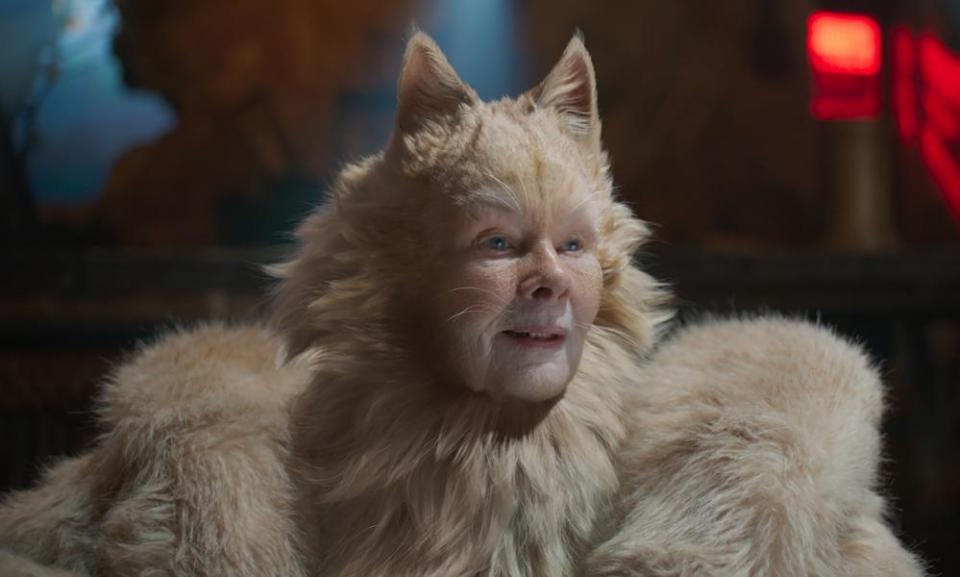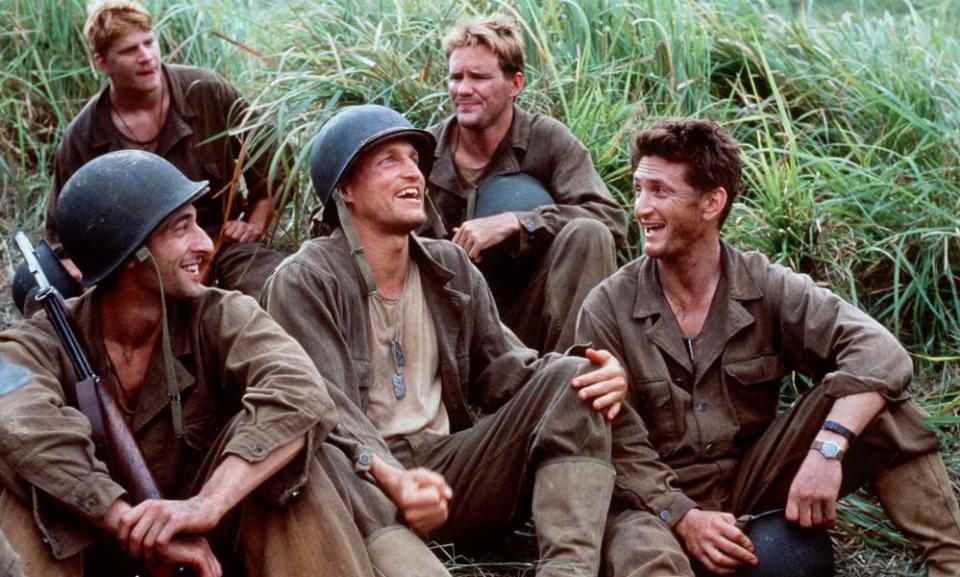Beyond the Snyder cut: the other mythical films we're curious to see
Snyder Cut fever has taken over America, with streaming viewers responding to the reinstatement of one man’s unchecked vision over the mucking-about from interferers at the studio. The shifting fate of Justice League retells an old showbiz narrative – talent v industry – with a heartening victory for the David of the dynamic, as the global conglomerate yields to the ceaseless requests of a vast and ardent fanbase. But more frequently, the money-men win out and get their way in edits, wresting control from the creators for the sake of marketability.
Below, we’ve surveyed eight of the most prominent stories in this vein, tales of mythical cuts without an army of devotees to force them into release. Tinkered with for the sake of length, profit and taste both good and bad, they’re playing in an exclusive engagement in the public imagination.
Related: Does Zack Snyder's Justice League signal the end of the DC Extended Universe?
Mrs Doubtfire: the profane cut
Robin Williams may have given us a treasure trove of kid-friendly entertainment, but the man himself was hardly PG. From the foulmouthed mania of his comedy sets to his behavior behind the scenes, he cultivated a decidedly adult persona that he nonetheless excelled at fitting into all-ages environments. One such example would be his time spent on set for Chris Columbus’s widely beloved cross-dressing family picture, during which the star was said to have improvised so much – and so freely – that he filled out an R-rated version of the PG-13 final product. Some have theorized an ante-upping NC-17 cut might be out there somewhere, but actor Mara Wilson (who appeared in the film as a whippersnapper) has dispelled that particular bit of scuttlebutt. Though it would be fun to hear Williams doing his version of The Aristocrats for an audience of increasingly scandalized children (Columbus has since said he’s open to making a documentary about the “outrageously funny” material that was kept out of the final version).
Cats: the butthole cut

It is the true magic of Tom Hooper’s unhinged feline-surrealism musical that because every aspect is so dazzlingly misjudged, any claim about the film sounds like a possible truth. In that case, sure, why not believe the murmurs that an early pass at the CGI rendered the ensemble of humanoid cat-people with realistic anuses? The special-effects team had a much-publicized hell of a time synthesizing the motion-capture character design, with one animator recalling a cruder textural model giving the impression of “very furry lady genitals and buttholes” in the cast’s private regions. Immediately, an ungraspable dream took shape. Judi Dench and Ian McKellen? Anuses. Rebel Wilson and James Corden? Anuses. Taylor Swift? Anus. None would be exempt. The reasons for altering this detail may be obvious, but the tantalizing fantasy of hidden orifices has an elusive lure all its own, the suicidal hanging Munchkin for a new generation.
Dune: the Lynch cut
It’s hard to believe that a space opera as singularly bizarre as David Lynch’s adaptation of the legendary Frank Herbert novel could have been the result of creative compromise. And yet, American cinema’s strangest genius has distanced his name from his blockbuster-sized bomb, crying foul against Universal as de-Lynch-ifying the nearly three-hour-long cut he’d laid out. The plot was truncated and simplified, the more confusing scenes (or as Lynch fans call it, “the good stuff”) were ditched, and the blazing weirdness was diminished in a futile effort to bolster a mainstream appeal they never had a chance of attaining. These days, the director clams up when asked about it in interviews, and he’s reportedly turned down offers to assemble a director’s cut of his own for home release.
The Thin Red Line: the Adrien Brody cut

It’s every actor’s nightmare: you’re there on the night of your new movie’s big premiere, you settle in to your seat, the show begins, and you’re nowhere to be found onscreen. It’s the nature of movie production that a good portion of footage must be left on the cutting room floor, and sometimes that means the entire role of a tertiary character. But Adrien Brody had been led to believe he had one of the principal parts in Terrence Malick’s transcendent military epic set in the Pacific theater, so imagine his shock to discover that his presence had been slimmed to a total of two lines in five minutes of the run time. He was one of the biggest casualties of an intensive editing process that left reams upon reams of material unused, including voiceover from Billy Bob Thornton and scenes featuring Bill Pullman and Mickey Rourke.
The Road Back: the anti-Nazi cut

As we learned in the recent Mank, Hollywood was slow to come around on interventionism during the second world war, and those who urged action through their films met with great opposition from upper-level executives with political ties. Case in point: James Whale’s period piece set during the previous world war, which depicted German soldiers returning to a homeland changed, now seized by ideological fracturing and a hawkish thirst for violence. The bold anti-Nazi commentary drew the ire of the German government, who threatened a ban of all Universal imports unless the messaging was toned down, and the studio acquiesced. Whale spent the rest of his life furious that the work he’d hoped would be his masterpiece had been pried from him and scrubbed of its subversive streak; to make matters worse, the studio lightened things up even further by inserting passages of comic relief featuring cowboy character actor Andy Devine.
Fantastic Four: the Trank cut

For whatever reason, Hollywood just can’t figure out the Fantastic Four. To take Josh Trank’s word for it, however, his 2015 reboot would’ve worked if he could have just done it his way. As is, the superhero also-ran lacks distinction and flavor, a neutered departure from the darker and more outré tone that Trank now says had been pried from him. There’s more he-said/he-said in here than most, with some reports painting 20th Century Fox as micromanaging meddlers and others casting Trank as an erratic loose cannon in need of a guiding hand. 20th Century Fox suits would claim to have supported Trank 100%, while actor Toby Kebbell would describe the unrealized version as “a great film that you’ll never see”. Word is that Trank wanted to massage Cronenbergian body horror into Marvel’s “first family”, mutated as they were by cosmic rays.
Caligula: the non-pornographic cut

This extravagant account of the Roman emperor’s hedonistic life and times now enjoys a legacy as one of the most sexually graphic wide-release motion pictures ever to pass through American cineplexes, but that wasn’t in the plans for director Tinto Brass. He had pictured a more serious-minded satire about how absolute power corrupts absolutely, putting him at odds with the producer and Penthouse founder, Bob Guccione. For the famed nudie mag’s first and only venture into film production, he wanted not just nudity, but un-simulated sexual activity pushing the envelope to the point of tearing. Brass assembled a relatively modest cut deemed too tame by the higher-ups, so Guccione enlisted Giancarlo Lui to shoot new orgy scenes starring Penthouse Pets for the edit that would eventually hit theaters. One year later, Brass was disavowing his participation in the project to interviewers.
Event Horizon: the fainting cut
It’s all James Cameron’s fault. If he had only completed work on Titanic in time for the late-summer release slot Paramount had in mind, the studio wouldn’t have been forced to bump up Paul WS Anderson’s cerebral sci-fi nightmare from the fall to make room for their biggest tentpole. A shortened timeline rushed Anderson through filming and editing – the average 10-week period of cutting together the first draft was slashed to six – and left the top Paramount brass out of the loop until the first test screening. They did not realize the director’s interpretation of the script would be characterized by violence so intense that one member of that early focus-group audience was rumored to have passed right out. Under duress, Anderson sculpted his thriller set on a ship strafing inter-dimensional hell into a less alienating shape, though robust video sales convinced Paramount that there may be some money in putting out a director’s cut. Unfortunately, by that time, a lot of the excised footage had already been lost or destroyed.

 Yahoo Movies
Yahoo Movies 
